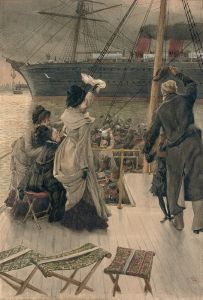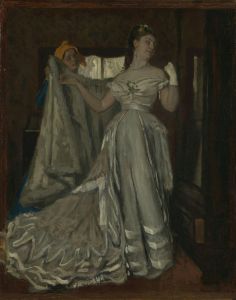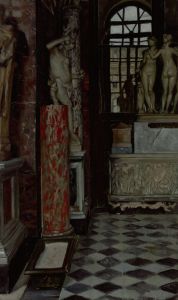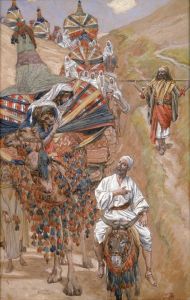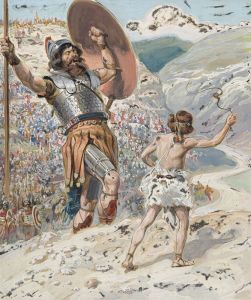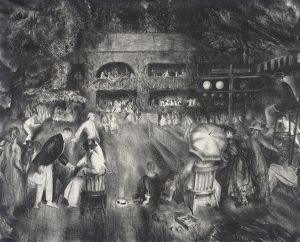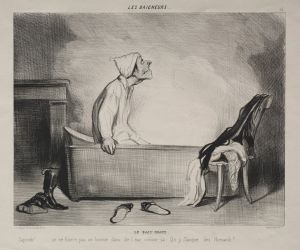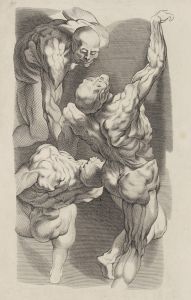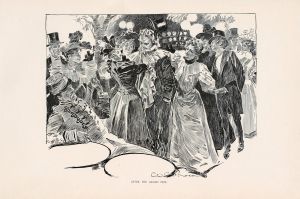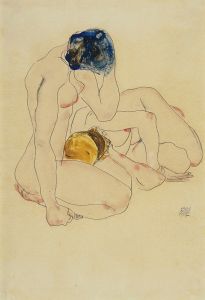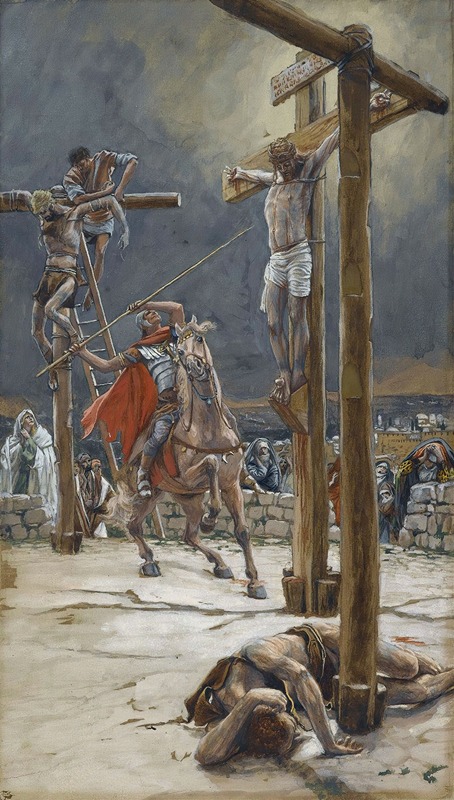
The Strike of the Lance
A hand-painted replica of James Tissot’s masterpiece The Strike of the Lance, meticulously crafted by professional artists to capture the true essence of the original. Each piece is created with museum-quality canvas and rare mineral pigments, carefully painted by experienced artists with delicate brushstrokes and rich, layered colors to perfectly recreate the texture of the original artwork. Unlike machine-printed reproductions, this hand-painted version brings the painting to life, infused with the artist’s emotions and skill in every stroke. Whether for personal collection or home decoration, it instantly elevates the artistic atmosphere of any space.
"The Strike of the Lance" is a painting by the French artist James Tissot, created in 1886. Tissot, born Jacques Joseph Tissot in 1836, was known for his detailed and often dramatic depictions of contemporary life, as well as his later religious works. "The Strike of the Lance" is part of his series of biblical illustrations, specifically focusing on the events surrounding the crucifixion of Jesus Christ.
The painting captures the moment described in the Gospel of John (John 19:34), where a Roman soldier pierces the side of Jesus with a lance to confirm his death. This act is significant in Christian theology, as it fulfills the prophecy that not one of Jesus' bones would be broken (Psalm 34:20) and that they would look on the one they have pierced (Zechariah 12:10). Tissot's work is noted for its historical accuracy and attention to detail, reflecting his extensive research into the customs, architecture, and attire of the period.
In "The Strike of the Lance," Tissot employs his characteristic style, blending realism with a dramatic narrative. The composition is carefully constructed to draw the viewer's eye to the central figure of Jesus on the cross, with the Roman soldier in the act of piercing his side. The expressions and postures of the surrounding figures convey a range of emotions, from sorrow and despair to indifference and curiosity. The use of light and shadow enhances the dramatic effect, highlighting the central action and creating a sense of depth and realism.
Tissot's religious paintings, including "The Strike of the Lance," were part of his larger project to illustrate the life of Christ. This series, known as "The Life of Our Lord Jesus Christ," consists of over 350 watercolors and was published in several volumes. Tissot traveled to the Middle East to gather material and ensure the authenticity of his depictions, which was a relatively novel approach at the time. His works were well-received and have been praised for their meticulous detail and emotional impact.
"The Strike of the Lance" is housed in the Brooklyn Museum in New York, which holds a significant collection of Tissot's biblical illustrations. The painting, along with the rest of the series, continues to be an important reference for both art historians and those interested in religious art. Tissot's dedication to historical accuracy and his ability to convey powerful narratives through his art have cemented his reputation as a significant figure in 19th-century painting.
Overall, "The Strike of the Lance" exemplifies James Tissot's skill in combining detailed research with artistic expression, resulting in a work that is both historically informative and emotionally compelling.






